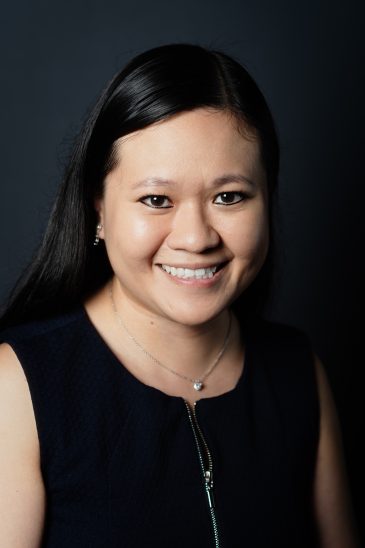Deciphering the data of the Universe
Dr Karen Lee-Waddell is studying how the Universe changes over time, using data from Australian Square Kilometre Array Pathfinder (ASKAP) telescope. At the same time, she’s setting up the Australian SKA Regional Centre so future scientists will be able to do the same thing on a much larger scale – using data from the world’s most powerful telescope, the Square Kilometre Array (SKA), to further our understanding of the Universe.
About Dr Karen Lee-Waddell
Karen has already juggled two successful careers, which have positioned her uniquely to move her research to the furthest reaches of the Universe using the world’s most powerful telescopes. While studying physics and astronomy in Ontario Canada, she first heard about plans for the SKA during her PhD. “I’d already fallen in love with research, radio astronomy, and travelling around to work with the best telescopes in the world,” she reminisces. “So, hearing about this amazing world-wide research project that would bring nations together in the common pursuit of science and understanding the Universe – I wanted to be a part of that.”
As soon as she finished her PhD, she moved to Sydney to work with ASKAP, one of the precursor telescopes to the SKA. By mapping the hydrogen distribution across sections of the sky, her team is examining how galaxies form and evolve in much greater detail than ever before. They are already working with hundreds of ‘new’ galaxies, that were unresolved blurs in previous sky surveys. As she progresses in her career, Karen continues to lead the Widefield ASKAP L-band Legacy All-sky Blind survey (WALLABY), a neutral hydrogen survey of 75 per cent of the sky that will detect hundreds of thousands of galaxies.
While still at university, Karen also joined the Royal Canadian Navy as a Logistics Officer. Throughout her study and research she continued as an active Reservist, serving with units in Canada and then in Australia, as a foreign exchange officer. “During the day I’d be doing astronomy, but on certain evenings and weekends I’d be dealing with personnel, military support services, and general logistics for the Reserves.”
What drew her to science?
Growing up in a big Canadian city, the light pollution meant Karen never really saw the night sky. She remembers: “My sister was driving me home from a visit to a more rural area one night and her car had a sunroof. She opened it and started pointing out a few constellations. I was about nine years old at the time and I had NEVER seen the night sky like that – I fell in love. I started reading astronomy books and never looked back.”
Research with supercomputers
Karen relies on Pawsey supercomputing to process and store all of the raw data collected by ASKAP, turning it into useable information for astronomers. “We’re almost at full science operation of ASKAP, generating over four terabytes of data per hour,” she says. “When you’re working with one terabyte cubes of processed astronomical data, you need much bigger computers than conventional laptops.”
Real world solutions
ASKAP and the research it enables isn’t just a stepping stone to the full SKA telescope, it’s also building a community that is developing the data processing capabilities that will be required for SKA-sized datasets.
“The SKA will serve up more astronomical data than anyone has ever dealt with, 600 petabytes per year. It’s one thing to process and store it, but it’s another to get that data to the scientists so they can do their research,” explains Karen.
SKA Regional Centres are being created to allow scientists to access and handle the eventual SKA data, storing processed datasets together with the analytical tools and algorithms needed to do research at the required scale. Karen is the Director of Australia’s SKA Regional Centre, with the task of creating this $63 million facility for Australian researchers.
“The goal is to make sure make sure our scientists can actually do research with the corrected, calibrated, and imaged datasets that will be coming from the SKA telescopes. With Pawsey as a partner, we can test workflows and tools with ASKAP data as we scale up. In learning how to deal with full science operation for the WALLABY survey and other projects, we’re learning how to deal with eventual SKA research.”
Karen is combining her radio astronomy and supercomputing expertise with 13 years of military leadership and logistics training to make the Australian SKA Regional Centre a reality over the next ten years.
“I remember going into work each day, knowing that I could be the first person to set eyes on a new galaxy. The discovery aspect of my work really drove me as a researcher. But now I’m working on the logistics so others can do that. With SKA Regional Centres, researchers will be able to see galaxies that have never been seen before and understand things no-one has understood before. My job now is to help entire teams of scientists use the SKA to figure out what is ‘out there’ and answer some fundamental questions about how the Universe works. That’s still my passion.”
